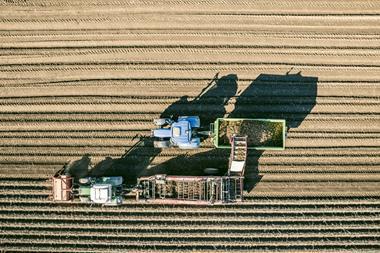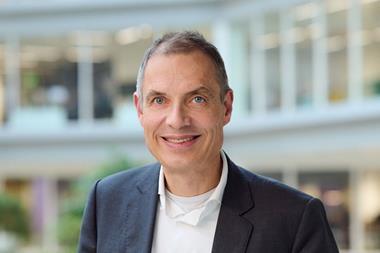Dutch institutional investors are showing increasing interest in microfinance as a diversifer and the market appears to be largely untapped. Leen Preesman reports
As one of the frontrunners, SNS Asset Management has closely witnessed the increasing popularity of microfinance. In June, it decided to reopen its Institutional Microfinance Fund until October, after its initial aim - deposits totalling €100m - had been exceeded by a quarter. When deposits had risen to€155m in October, SNS was still counting.
"We have postponed the closing of the fund again, in order to offer pension funds some leeway on a decision to join," says Theo Brouwers, director of SNS Asset Management. "Whoever comes first, will be served first. But we will definitely close at €175m. That is the maximum amount we can allocate to proper investment destinations at the moment."
SNS says a dozen large Dutch pension funds are among the subscribers - for example, the €12bn railways pension fund SPF and the €10bn scheme for the printing industry GBF.
Brouwers thinks the oversubscription of his fund proves institutional investors are looking for investments that contribute to social development. "It shows that professional asset management and social goals can go together," he says.
SPF selected the investment as part of its socially responsible investment portfolio. However, spokesman Tjitte Faber made clear that the SPF investment in the SNS fund is expected to generate returns that fit within the overall pension fund risk profile. SPF has been working with the Dutch Royal Tropical Institute (KIT) on poverty reduction projects.
SPF was chosen for the SNS Institutional Microfinance Fund because it not only accepts third-party investments but will also receive investment inflows of its parent company, all of which will be provided as loans for microfinance projects, Faber indicated.
In what it calls a "balanced approach", SNS's Institutional Microfinance Fund - managed by DWM Asset Management LLC - invests 70% of its assets in loans and the remaining 30% in equity of the microfinance institutions, or MFIs. By making about half of the investments in local currency, SNS anticipates the needs of the financial community in developing countries, it says. "Currency risks are hedged if possible and cost-effective, while investments in US dollars will be fully hedged," Brouwers explains.
In order to avoid potential defaults and to achieve sufficient returns on the equity stake, selecting the right MFIs is crucial, the director stresses. "We are putting a lot of time and effort into this process. Our investment managers will visit the institutions, to get a proper view on their systems of risk management and their checks and balances."
To further minimise risks, SNS will diversify its microfinance portfolio over all regions of developing countries.
Based on the experience so far, as well as the analysis of a long-term spread over 25 countries, Brouwer expects yearly returns of 6% to 11% during the seven-year duration of the fund.
The chances of small borrowers defaulting on their repayments are low. "Despite the relatively high interest of at least 15%, only 1% to 3% of the loans is not paid back," the director says. "ING Bank in the Netherlands could be jealous of this score."
In Brouwers' opinion, one of the largest risks is that his fund cannot obtain the required equity stakes in MFIs. "Moreover, it is important that the institutions can resist the temptation to lending to small and medium enterprises, since this is a different market with different risks."
Although SNS Institutional Microfinance Fund is among the largest in the world, according to Theo Brouwers, the market is many times bigger. "Of the €213bn estimated by the United Nations, so far only €11bn has been filled in by large investors with loans that serve 100 million people. So, institutional investors are facing a giant and fast growing market. MFIs are increasing their size by 80% to 150% a year."
Brouwers senses the potential for microfinance to evolve into a mature asset class.
ABP, the €215bn civil service pension fund, was the first Dutch scheme to invest in microfinance in 2005 and has been enthusiastically expanding its portfolio ever since. After a start with $5m (€3.5m), it has doubled its investments a couple of times. It expects to have invested $40m at the end of this year, making ABP the largest investor in micro loans in the Netherlands.
According to ABP, micro credits are an attractive long-term investment for pension funds as a diversifier of investment risks. "Their returns have little correlation with returns on equity and fixed income. Moreover, they are hardly susceptible to macro-economic developments, such as interest and inflation," it says.
"The yearly returns of micro credits are approximately 7%, which is very acceptable given the low risks," Huub Hamers, responsible for ABP's microfinance portfolio, said in the scheme's quarterly magazine.
"Because of the social control within the group of borrowers, the write-off on loans is negligible at a competent MFI. And by screening our potential partners carefully, we hedge the risk that our fund manager doesn't select the right MFIs."
According to Hamers, the social aspect of microfinance is important to ABP, but the returns have priority. "We wouldn't invest in micro loans if the yield is just 2%. At the end of the day, we have a task as an investor. We aren't a charity," he stresses. Because of the relatively small scale of the microfinance portfolio, ABP has decided to place its investments with specialised fund managers. Hamers says: "Only a small numbers of MFIs is able to generate a profit. Selecting the best ones requires a large network, a lot of knowledge of the region and a lot of experience in judging the MFIs' quality."
In order to get a better picture of the local situation, a delegate of ABP Asset Management will soon visit a number of MFIs. "Locally you can get a better impression of how an MFI operates, and how micro credits affect society," Hamers explains.
SNS has similar plans, as Theo Brouwers indicates. "In addition, we will invite MFIs to visit us for a presentation of their activities."
Hamers expects a significant increase in microfinance, both in the number of countries and in the demand for assets. "The market could grow fivefold or even tenfold," he says. Although he acknowledges that, in theory, the market could become over-funded, he has not spotted any signs in the risk-returns profile yet, he says.
According to the manager, ABP's present portfolio is mainly invested in Central and Latin America, but many micro loans have also been granted to entrepreneurs in Africa, Eastern Europe and the Far East. "During the coming years, more micro credits will go to the Far East and Asia in general," he forecasts.
ABP has placed its first investments in the Dexia Micro Credit Fund, a Luxemburg SICAV, managed by Geneva-based Blue Orchard Finance. Dexia's fund has been operating since 1998, when is was the first commercial investment fund in micro-finance. ABP is in discussions with other funds as well for additional investments.












No comments yet